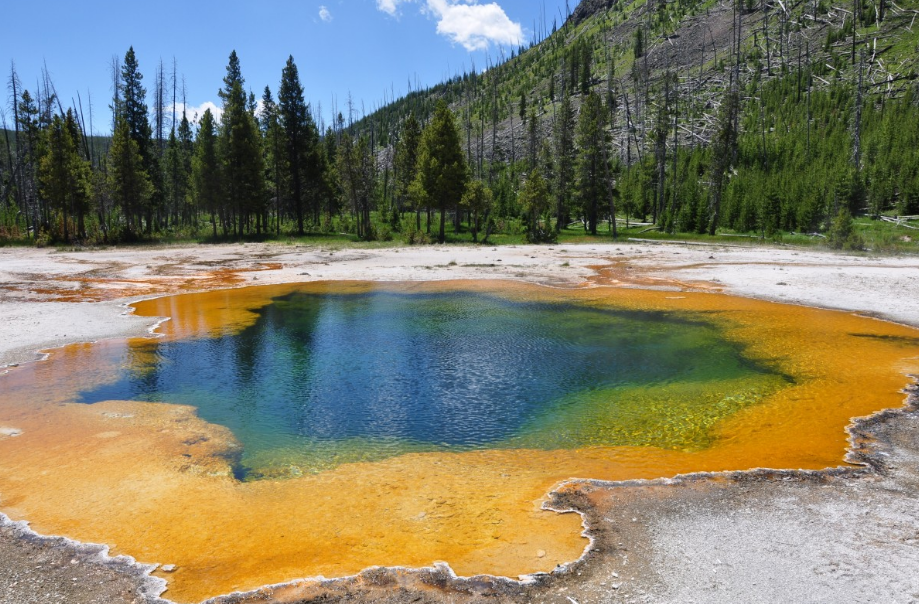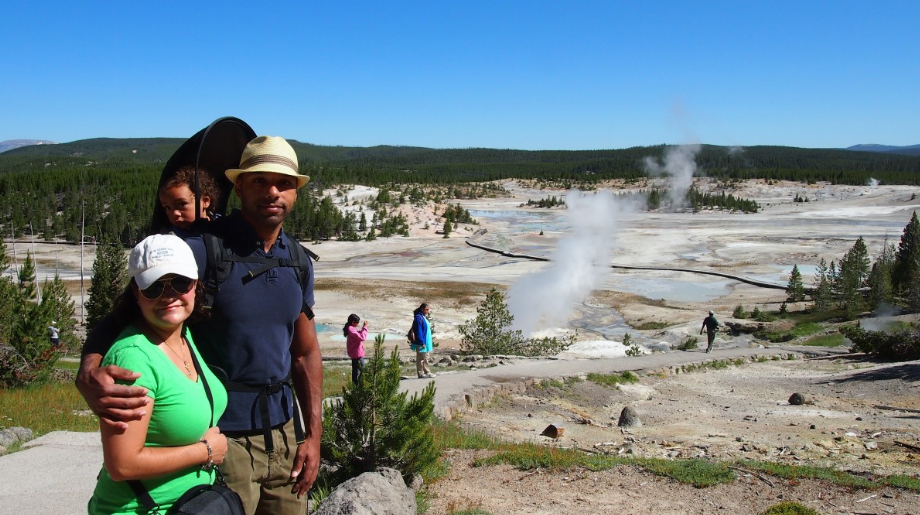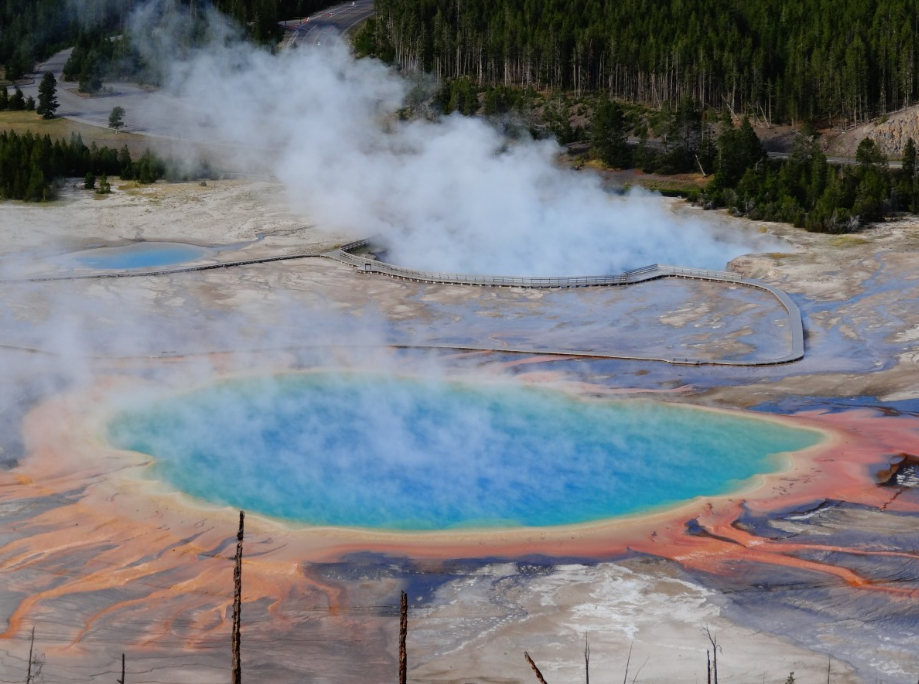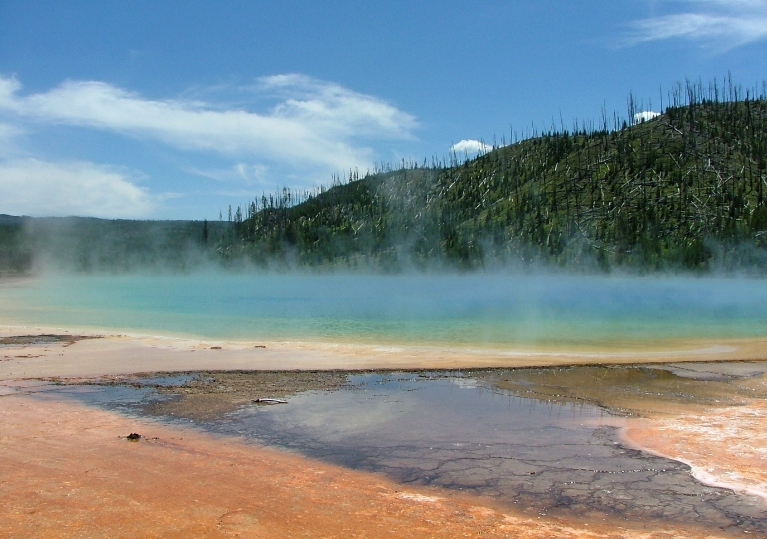Camping at the Yellowstone National Park is a very popular adventure each year, but it’s not always going to be easy. You need to get a permit for overnight stays, and then you have to choose among the many great places to camp in Yellowstone. But to help you have a better time, we have some Yellowstone camping tips that can definitely help.
General Camping Tips Yellowstone Visitors Need to Know
- There are 12 general campgrounds inside the Yellowstone, but not all of them are open all through the year. You can avail of 9 public lodges if you’re not a camper.
- Inside the park, there are medical centers, stores, gas stations, and even post stations. These amenities make it much easier for newbies. There are even restaurants including places for fine dining.
- In some places, there’s Wi-Fi and cellphone access. But it’s not dependable, so if you’re bringing kids you may want to bring some walkie-talkies to communicate with the children.
- Some trails don’t allow pets, but camping sites generally allows for them. Still, they have to be leashed all the time. Just remember that in some areas it’s not safe to bring a pet.
- Visit the National Park Service website to obtain the necessary permits for various activities. These can include overnight stays, boating, fishing, or even commercial filming.
Yellowstone RV Camping Tips
You need to get your reservations early if you’re using your RV. You can find the RV camp locations on their website. Most of the sites usually take in RVs which are no longer than 30 feet long.

However, if you have a larger rig then it doesn’t mean that the national park RV length restrictions keep you from using your vehicle. You may try to get a reservation for the parks near the Yellowstone entrances. These are generally suited for the bigger RVs, and they may have more amenities.
Additional tips:
- If you want RV hookups, your only campsite option is Fishing Bridge. All the campsites where you can get reservations (also known as “reservable” campsites have dump stations. But some may close due to freezing temperatures.
- You can use generators at reservable campsites, and also in Mammoth and Norris. These can be used from 8AM to 8PM, as long as their noise output doesn’t exceed 60 decibels. So if you’re buying generators, go with the ones that say they’re legal to use in a national park.
- Some Yellowstone road openings may not allow entry for RVs, along with trailers and buses.
What Time Does Yellowstone Open?
This may seem like a simple question, but it actually has a complicated answer. You better consult the Yellowstone Operating Hours and Seasons website for the most accurate schedules.
How to Camp in Yellowstone
Here are some tent camping tips that you’ll find useful:

- It can get very cold indeed here in Yellowstone. You have to be ready for that. You need cold weather sleeping bags along with a sleeping pad so you’re off the ground. If you can use an air mattress, then do so. If you can’t, even cardboard can work to put some insulation to the bottom of your tent.
If you happen to be camping with a toddler, we strongly suggest a suitable sleeping bag. - Nights can be cold, but days can be warm. So do you dress to keep cool or do you bring cold weather clothes instead? The simple answer is to just dress in light layers. You can put on several layers for the morning, and then shed a few of these layers when the weather turns warm in the afternoon. You can then put back on your extra layers when the night becomes cold and nippy.
- If you forgot some sort of essential camping item, there are stores and rental places in Yellowstone that can offer you what you need.
- Mosquitoes are major problems in trails and campsites in Yellowstone. That’s especially true for summer camping. You will really need it if you’re venturing deep into the forest.
Is It Safe to Tent Camp in Yellowstone?
General safety can be an issue here in Yellowstone, especially in some areas with bears. It’s true that these days you don’t really see them much in the campground areas. Many of these bears have been chased away with rubber bullets, and they’re smart enough not to go back. Still, it doesn’t hurt to be sure.

- To avoid any issues with bears (or other wildlife for that matter), you have to store all your food in bear-proof boxes. Bears have an amazingly keen sense of smell, and even used gummy bear wrappers can attract them.
- In fact, you’re best off if you don’t leave any scented items like lotions out on your camping or picnic table. They’ll just attract critters, and some of them can be dangerous.
- You may want to talk to a park ranger first, before you go out backpacking through the trails. They’ll have lots of crucial tips to share, and they can recommend safe areas for you to visit. Gear-wise, a quality hiking backpack is a must have and so are comfortable hiking boots!
- When you set up your campsite, your food preparation area should be at least 100 yards away from your sleeping area. That’s because the cooking area may attract wildlife, and if you’re sleeping nearby you may wake up to rather unpleasant creatures in your tent.
- After you cook food, change your clothes because your cooking clothes will smell delicious to animals such as bears. The clothes that smell like food should be kept away from your campsite.
- If you’ve come to a campsite that’s been recently used, check the area for any leftover garbage or food. If you find an area with the leftovers, remove the remnants and then set up your sleeping tent at least 200 yards away.
- Hang your food, cooking, garbage, and clothes that smell like food at least 10 feet up off the ground. You should be able to find some convenient trees to hang your smelly stuff.
- Dispose of garbage properly. Many of the campgrounds have specific rules about garbage, so you should check them out online first.
Are Dogs Allowed in Yellowstone?
While it may be legal to bring pets along, it may be a lot more convenient for you to just keep them at home instead.
- You can’t bring your pets on boardwalks and trails. They’re not allowed in the thermal areas or in the backcountry.
- It’s not really safe to just stash your pet dog in the car, especially during the summer when it can get really warm during the day.
- Pets must always be on a leash when they’re on the road, in the parking areas, and in your campground.
- Pets must also be attended at all times. You can just tie the leash to a fence or a tree.
- There is no boarding option for pet animals in the park, but they’re available in the surrounding neighborhoods.
Picking a Campground
With 12 campgrounds to choose from, your choice will depend on your particular preferences:

- If you’re looking for a central basecamp, your best bets are Norris and Canyon. They’re the most central of all the options, though Bridge Bay and Madison can work as alternatives even if they’re not as centrally located. RV campers may also consider Fishing Bridge.
- Do you want the campground with the best views? You can try Pebble Creek for the fantastic view of the Absaroka Mountains. The fantastic views of Electric Peak can be seen from Indian Creek. Bridge Bay has a picturesque view of the lake right by the Absaroka.
- What if you want some privacy or seclusion? Pebble Creek doesn’t have the crowds you’re avoiding. Indian Creek is also away from the main road, so it’s very quiet. You also get some privacy in Grant campground as the area is surrounded by trees. A cozy campfire is always welcomed, so take a good fire starter with you.
- If you’re angling to see some wildlife, you can try Slough Creek campground, along with Pebble Creek. They’re in Lamar Valley which offers terrific wildlife views and you may even get a glimpse of wolves. Mammoth is also a good choice, with higher chances of elk, buffalo, and even the odd bear.
Tips for Camping in Yellowstone for Different Seasons
Summer (Memorial Day to Labor Day)
Bring clothes for all types of weather. During the day, the temperature can go from 70 to 80 degrees F. There may be thunderstorms in the afternoon. Nights can be very cool, with the campsites at higher elevations having below freezing temperatures.
Fall (September to November)
During the day the temperature can go from 30 to 60 degrees F. Snow is quite common, and it can even get heavy. So pack warm clothes, and bring along some snow gear especially for kids.
Winter (December to February)
The day can get very cold, ranging from zero to 20 degrees F. At night, it’s typical to have subzero temperatures. On average, Yellowstone gets around 150 inches of snow a year. You’re better off at a lodge of you’re not used to winter camping.
Spring (March to May)
Conditions are similar to fall, so be ready for rain and snow. For ladies, a warm bag to sleep in is a must.
